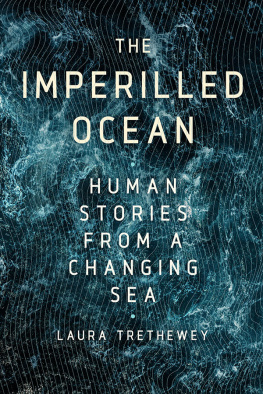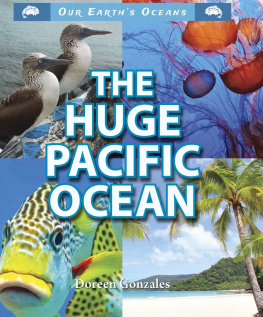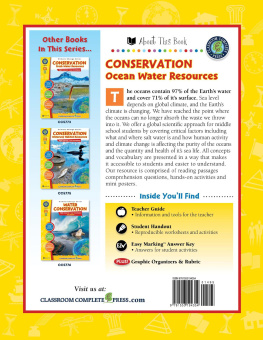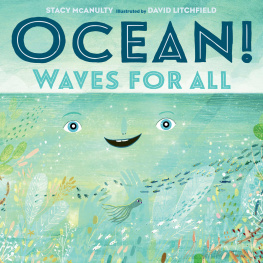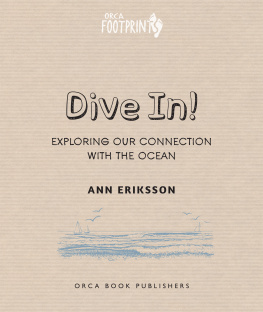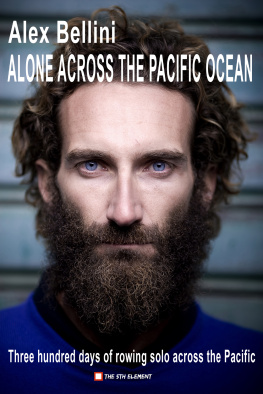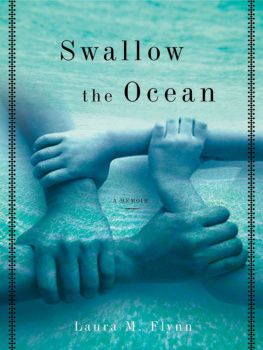
Contents
THE
IMPERILED
OCEAN
HUMAN STORIES FROM A CHANGING SEA
LAURA TRETHEWEY

PEGASUS BOOKS
NEW YORKLONDON
To Till
In the four years I spent writing and reporting The Imperiled Ocean, I spoke to dozens of people who gave their time, knowledge, and insight to this project.
Thank you to Pete Romano and his staff for letting me explore the Hydroflex warehouse in Los Angeles. Thanks also to the now-shuttered Tank One Studios in Long Beach, including owner Al Gerbino, handyman and safety diver Joseph Smith, producer Michael Park, and administration assistant Melody Cortez. Water stunt coordinator Katie Rowe talked me through the challenges of working with water on set. Animators Eloi Andaluz and Will Wallace provided insight into the evolving industry of visual effects.
The Bluewater Cruising Association was a phenomenal resource while I wrote about the world of offshore sailing. Thank you to Bluewater sailors Dennis Giraud, Gillian West, Helen and Jean Baillargeon, Beth and Norm Cooper, and Fiona McGlynn and Robin Urquhart for letting me board their boats and understand their lives.
Hassan Basheer and Mohammed Botwe are pseudonyms for the two men whose Mediterranean journeys I covered. Both relived the most difficult moments in their lives by retelling their stories, and I thank them for that sacrifice. Neither wanted to be identified out of fear of retaliation against them or their families or of legal consequences in Germany. I interviewed a half dozen other refugees from Afghanistan, Syria, Guinea, and Somalia. For similar reasons I wont identify them, but their stories and sacrifices helped bring this story to the page. The German nonprofit Pestalozzi Kinder- und Jugenddorf helped connect me with recently arrived refugees. Social worker Karen Hansen, who worked at the refugee house where Mohammed lived temporarily, answered my questions, as did Elisa Kaltenbach at the University of Constances Department of Psychology.
Thanks go to the residents of Ladysmith and the Dogpatch, including Traci Pritchard, Bryan Livingstone, Ken Ireland, Daniel Inkersell, Lew McArel, Vince Huard, Luke English, Craig Appleyard, and Brian Charron. At the Ladysmith Maritime Society docks, thank you to Brenda and Norman Brook and to Rod Smith, the wharfinger. Ladysmiths mayor, Aaron Stone, and city manager, Ruth Malli, also answered my questions, as did RCMP officer Ken Brissard.
Ocean Legacys Chlo Dubois, James Middleton, and Eric (Dexter) McGillivray included me on their 2015 expedition to MuQwin Peninsula. Along the way, Julian (Garuda) Noel, Eric Robinson, and many others associated with the nonprofits efforts contributed to writing and reporting. Thank you to oceanographer Kara Lavender Law and marine biologist Chelsea Rochman for their expert input.
Cunard declined to be interviewed. In lieu of official information, Favio Oate rdeness friends and family helped fill out his life and time aboard, including Santiago Gutirrez, Carolina rdenes Tobar, and Carolina Oate rdenes. Author and former cruise-ship waiter Brian David Bruns related his personal experiences working on all of the Big Three cruise ships and helped confirm information about life on board. Thanks also to sociologist Ross Klein and lawyer James Walker for their insights.
Thank you to Erin Stoddard for allowing me on board his research boat and answering my endless questions about the life and future of sturgeon. Garrett Martingale, Jeff Beardsdale, Owen Catherall, Steve McAdams, and Greg George were also on board and provided diverse perspectives on studying and conserving a mysterious fish. Thanks also to Fred Whoriskey, executive director of the Ocean Tracking Network at Dalhousie University, Sarah Schreier at the Fraser River Sturgeon Conservation Society (FRSCS), and Marvin Rosenau, instructor in the Fish, Wildlife and Recreation program at the British Columbia Institute of Technology.
Thank you to the many colleagues and friends who read this work in progress and contributed invaluable feedback, including my thesis supervisor, Timothy Taylor, and thesis committee members Kevin Chong and Deborah Campbell at the University of British Columbias Creative Writing Program. I owe a huge debt of gratitude to Andreas Schroeder for giving me the space and time to write in his cabin. Jeremy Heywood, Catherine Po, Jane Campbell, Sierra Skye Gemma, Ryan Huizing, Alannah Biega, Chle Ellingson, Till Harter and Mark Gilligan also contributed to this project in ways big and small, as did my parents, Carole Prest and Paul Trethewey.
Thanks go to the editorial teams at the Walrus and Hakai Magazine, which published versions of chapters 4 and 5, and to my editor Jill Ainsley, whose handiwork improved every line in this book. Many more unnamed people contributed along the way through short conversations or through interviews that never made it to the page. But their help was essential in piecing together an overview of the ocean that is much, much bigger than one individual narrative. I am humbled by their generosity and thank each one for believing in me and this project.
Thank you, Till Harter, for your endless intelligence and awareness about the ocean world. On our first date we talked about sturgeon, and youve made this book far smarter than it ever would have been without you.
THE
IMPERILED
OCEAN
INTRODUCTION
The websites of the National Ocean Service, the United Nations Environment Programme, the Food and Agriculture Organization of the United Nations, NASA Science, and the Pacific Marine Environmental Library provided valuable facts and figures. On National Geographics website, you can watch oceanographer Bob Ballard explain the discovery and significance of hydrothermal vents. The websites CruiseLawNews.com, ParisMoU.org, and SeaShepherdGlobal.org were also helpful.
I learned about early mans seafood diet from Jon Erlandson and Scott Fitzpatricks article Oceans, Islands, and Coasts (Journal of Island and Coastal Archaeology, 2006) and Curtis Mareans Making the paper (Nature, 2007). Estimates about plastic in the ocean come from Jenna R. Jambecks Plastic waste inputs from land into the ocean (Science, 2015) and the Ellen MacArthur Foundations The New Plastics Economy (2016), among other studies and reports.
Books I consulted include Lincoln Paines The Sea and Civilization (2015); Alanna Mitchells Sea Sick (2010); William Langewisches The Outlaw Sea (2004); Wallace J. Nichols Blue Mind (2015); and Rose Georges Ninety Percent of Everything (2014). Garrett Hardins groundbreaking essay The Tragedy of the Commons was published in Science in 1968. I also drew on reporting by the Guardian, Antigua Observer, the New York Times, Newsweek, Forbes, the BBC, and MIT News. The quote from Anne Stevenson is from her poem The North Sea off Carnoustie.
ONE: CAPTURING THE WATER WORLD
On YouTube, you can watch clips from vintage underwater films and TV shows, including Sea Hunt, Jacques Cousteaus groundbreaking TV series The Undersea World of Jacques Cousteau, Creature from the Black Lagoon, and Adventures in the Red Sea. YouTube was also my purveyor of water-based music videos and tutorials on animating water. The detailed, behind-the-scenes breakdown of animated water effects on film websites like ArtoftheTitle.com, FXGuide.com, and AWN.com also helped.
Books I consulted include Chet Van Duzers Sea Monsters on Medieval and Renaissance Maps (2013); Joseph Niggs
Next page

